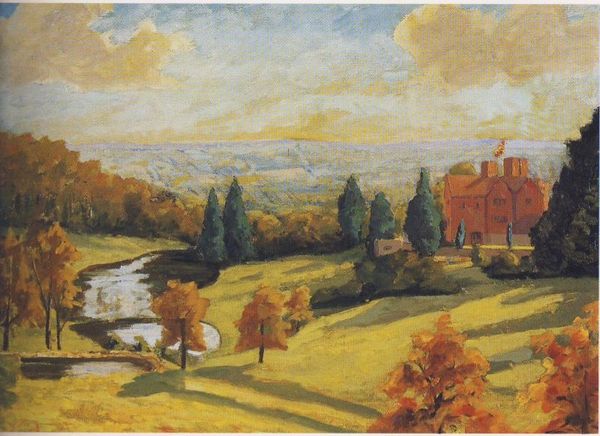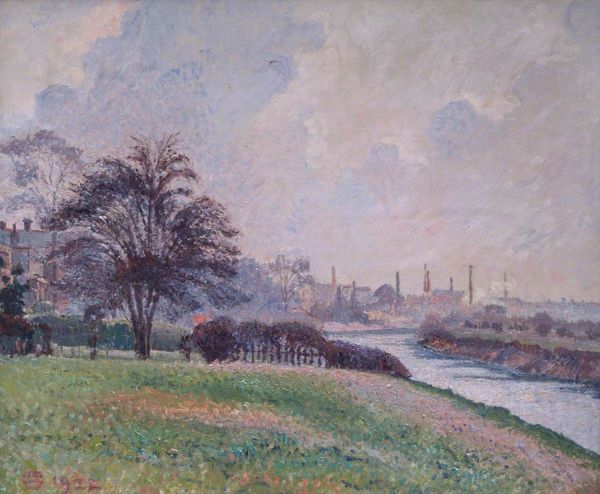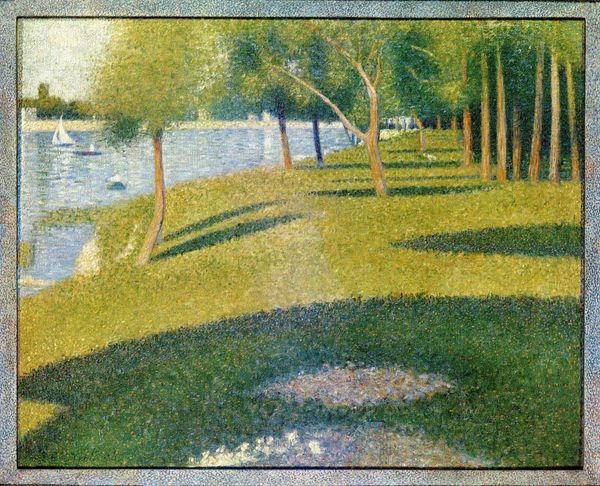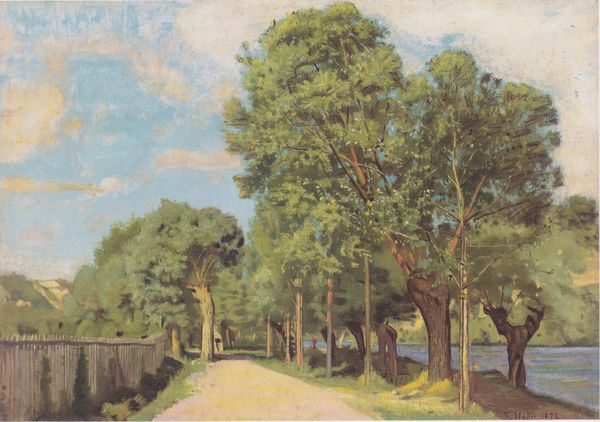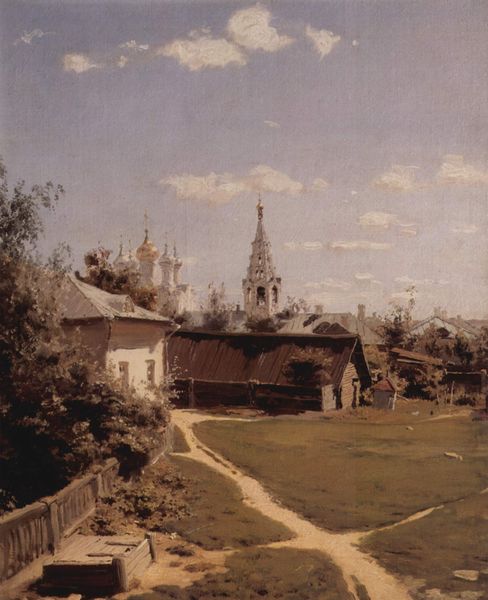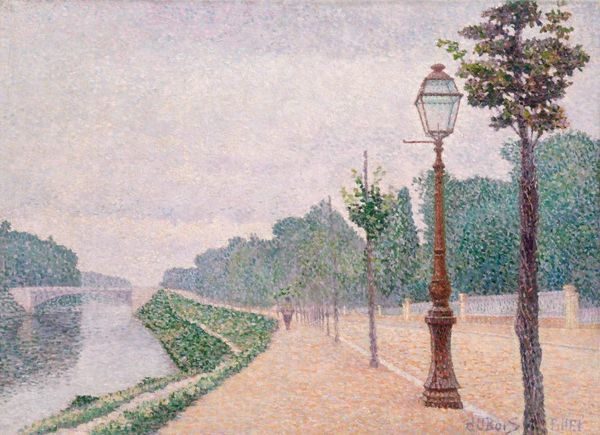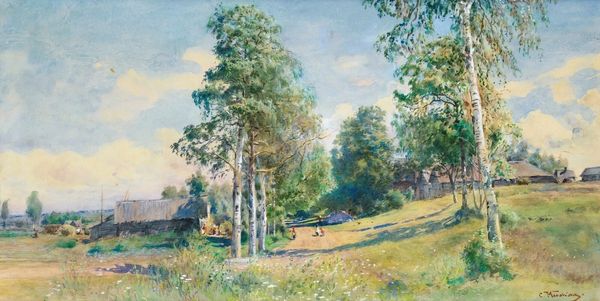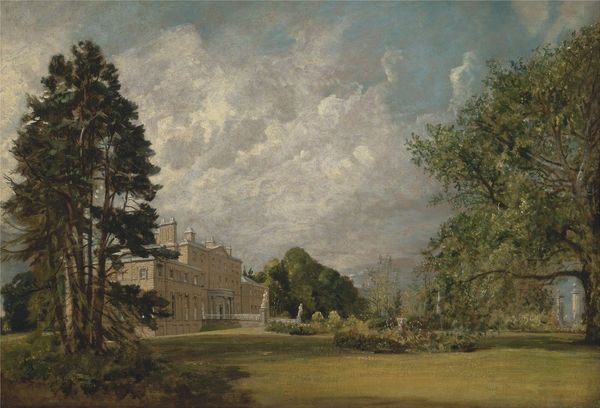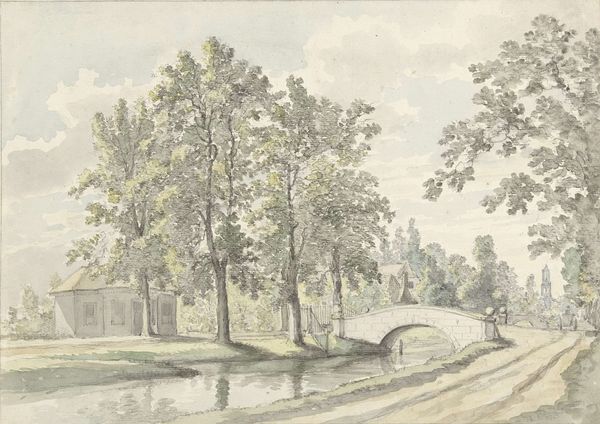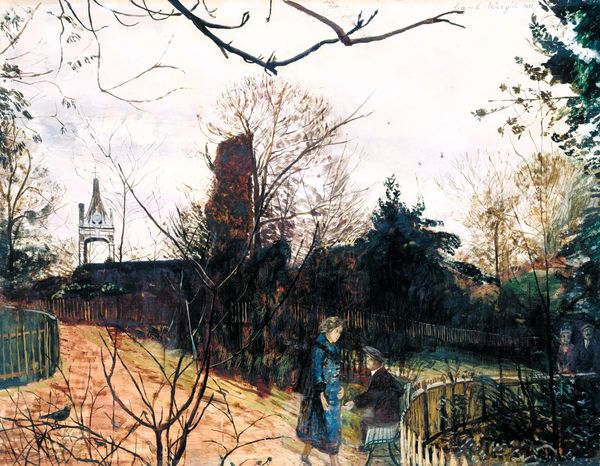
painting, plein-air, oil-paint
#
painting
#
impressionism
#
plein-air
#
oil-paint
#
landscape
#
nature
#
oil painting
#
nature
Copyright: Public domain
Lucien Pissarro painted Éragny Church using oil on canvas sometime between 1884 and 1890. It's an example of the Neo-Impressionist style, which flourished in France at the end of the 19th century. The painting presents a seemingly tranquil country scene but the institutional history of the Neo-Impressionists reveals the work to be more provocative than it initially appears. The Neo-Impressionists were reacting against the established art institutions of the time. Like earlier Impressionists, they often worked outside official academic circles and organized their own independent exhibitions. The style itself, with its emphasis on scientific theories of optics and color, was a deliberate challenge to the more intuitive approach favored by the art establishment. We might see the serene surface of Éragny Church as a subtle but persistent challenge to conservative tastes. To learn more, one might consult exhibition catalogs, artists’ letters, and period reviews that documented the debates of the time. The meaning of art is always contingent on its social and institutional context.
Comments
No comments
Be the first to comment and join the conversation on the ultimate creative platform.
